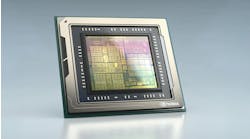The government has tasked the truck manufacturing industry to develop high-efficiency vehicles of the future, but some of the technological improvements accomplished through the “SuperTruck” program are here now.
When the U.S. Dept. of Energy handed out $187 million in grants to several key truck, trailer, engine and other component suppliers to create what it’s calling the “SuperTruck,” the goals it set were lofty. The SuperTruck program charges the truck manufacturing industry to significantly improve fuel efficiency for heavy trucks, all while maintaining current exhaust emissions levels while also demonstrating a 50% improvement in overall freight efficiency on a heavy-duty Class 8 tractor-trailer measured in ton-miles per gallon.
The program is a joint public/private partnership with the truck manufacturing industry kicking in for research and development to bring the funding for the program to a $270 million total investment.
“SuperTruck is about developing high-risk technologies and breaking new ground that will move us towards the goal of energy independence over the long term,” says Roland Gravel, head of the DOE Vehicle Technologies Program.
SuperTruck project participants were broken into teams and were competitively selected and charged with the following different focus areas:
-Cummins Inc.: Develop and demonstrate a highly efficient and clean diesel engine, an advanced waste heat recovery system, an aerodynamic Peterbilt tractor and trailer combination, and a fuel cell auxiliary power unit to reduce engine idling. The key focus is on engine efficiency.
-Daimler Trucks North America: Develop and demonstrate technologies that include engine downsizing, electrification of auxiliary systems such as oil and water pumps, waste heat recovery, improved aerodynamics, and hybridization. The key focus is on hybridization.
-Navistar: Develop and demonstrate technologies to improve truck-trailer aerodynamics, combustion efficiency, waste heat recovery, hybridization, idle reduction, and reduced rolling resistance tires. The key focus is on aerodynamics.
-Volvo Technology of America: Develop and demonstrate technologies to improve engine efficiency, truck-trailer aerodynamics, waste heat recovery, hybridization, idle reduction, and reduced rolling resistance tires. The key focus is on combined truck/engine efficiency.
On Track
In a summary of progress in the program, DOE’s Gravel says all the SuperTruck projects are on schedule to meet the 50% freight efficiency improvement goals. Forty percent of that goal will come from engine efficiency improvements, he says, and 60% from other vehicle system improvements such as aerodynamics, reducing weight, drivetrain friction reduction and for some of the industry partners, hybridization.
Vehicle baselines have been established as have the technical specifications for meeting the heavy-duty engine efficiency targets and pathways to meeting the engine target of 50% brake thermal efficiency, Gravel says.
Cummins and Peterbilt were first to put an actual “SuperTruck” —which developers call “Demo One” —on the highway for real-world testing. In March they released the findings from tests of the demonstration vehicle and the results were impressive.
The Class 8 Peterbilt 587 powered by a Cummins ISX15 engine averaged 9.9 mpg during testing last fall on U.S. Route 287 between Fort Worth and Vernon, TX. The testing was conducted over 11 runs meeting SAE International test standards along a 312-mi. route. The tractor-trailer had a combined gross weight of 65,000 lbs.
In addition to the fuel economy improvements, the truck also demonstrated a 61% improvement in freight efficiency during testing compared to a baseline truck driving the same route. That significantly exceeded the 50% SuperTruck program goal set by DOE.
Demo One features a higher-efficiency engine and an aerodynamic tractor-trailer that significantly reduces drag. The truck also includes a system that converts exhaust heat into power delivered to the crankshaft, electronic controls that use route information to optimize fuel use, tires with lower rolling resistance, and lighter-weight material throughout.
Today’s long-haul trucks typically achieve between 5.5 and 6.5 mpg. Cummins and Peterbilt engineers point out the 54% increase in fuel economy achieved with Demo One would save about $25,000 annually based on today’s diesel fuel prices for a long-haul truck traveling 120,000 mi. per year. It would also translate into a 35% reduction in annual greenhouse gases per truck.
Demo One was also just tested by Peterbilt and Cummins customer partner U.S. Xpress, delivering a commercial load between Irving and Laredo, TX, in May.
“The purpose of the test wasn’t really driven towards fuel economy. We have all these systems that need to be accepted by drivers to be brought into the marketplace,” says Scott Newhouse, Peterbilt senior assistant chief engineer. “And although we’ve worked with U.S. Xpress getting their feedback throughout the project, this gave us a chance to take a real driver and put him behind the wheel and get his feedback.”
And the driver’s feedback was very positive, Newhouse says. Of particular interest was the driver’s reaction to the truck’s cycle efficiency management system, the system that ensures the truck is always operating in its optimal range. “It was very well accepted by the driver,” Newhouse says, “and drivability of the truck was solid.”
The driver test was also focused on how well trailer aerodynamic enhancements worked in the real world. “When you put aerodynamic devices on trailers, how does that impact [the driver] when backing into a dock, accessing the load, and opening the doors? How much extra work does it take? These were the questions we needed answers to,” says Newhouse.
“It was a 950-mi. round-trip, and we were carrying freight for about half of that. So loading, unloading and everything in between, including a fuel stop, was fair game for them to critique,” says Ken Damon, Peterbilt SuperTruck project manager.
Damon adds the truck was headed into a 20-mph headwind most of the way, and there were no problems with the handling.
Cruising comfort
A key area of interest in the test was driver acceptance of the truck’s predictive cruise system that plans the routes and communicates the most fuel-efficient route. The system “looks” ahead, understands what change of terrain will be, and automatically adjusts the speed of the vehicle to stay in the most fuel-efficient zone.
“As the driver realizes the vehicle is speeding up and slowing down, one of the concerns we had is how would the driver feel,” Damon adds. “We were very happy to have the real driver operate it and feel comfortable with it, and the driver we had was not a cruise control kind of guy. The driver said he would definitely use it again.”
There’s a reason manufacturers are so concerned with driver acceptance of SuperTruck technologies. These trucks and technologies aren’t being developed as engineering demonstration projects, but as systems and vehicles DOE expects to deliver real-world efficiency.
DOE’s Gravel says he expects that as improved and more cost-effective manufacturing methods are developed, and market demand of technologies that improve fuel economy increases, more of the technologies developed for the SuperTruck will find their way into Class 8 trucks. “Over the next decade, an estimated 80% of these technologies are expected to be seen in the marketplace,” he says.
Developing viable technologies for the real world is key to the Peterbilt/Cummins program, says Newhouse. “We used two key criteria for this truck: Everything had to earn its way onto this vehicle…what did it do to improve fuel economy, and can we see this part or system being viable from a production standpoint? We didn’t know all the economics in each case, but it was important that we didn’t put something on the truck that didn’t have a business case.”
“We are always looking to improve fuel economy. We work with Cummins and Eaton and other suppliers to find any opportunity to improve fuel economy,” Newhouse says. “I think [the SuperTruck project] allows us to be more coordinated throughout the entire vehicle to demonstrate viable, feasible technologies we can actually bring to the marketplace as an overall combination system. A more public common goal among all the partners has allowed us to really focus, refine the resources collaboratively, and really drive a faster solution.”
Some of those technologies are ready for market, says Newhouse. In March, Peterbilt announced it was going into production with its new advanced technology SmartAir anti-idle cooling system. Another Peterbilt system developed through SuperTruck will support a 6x2 configuration on the tractor.
“And now that we’re starting to show the real test benefits of other technologies, we are moving forward with development with the intent to drive these into the marketplace,” Newhouse adds.
Technologies from SuperTruck R&D are also being incorporated into Freightliner vehicles that are in production, according to Derek Rotz, Daimler Trucks North America’s senior manager for advanced engineering/principal investigator for the Super Truck program.
“There have been ongoing efforts to spin off technologies and bring them to market as they mature. Some are nearer term, some are farther out,” Rotz says. “If you look at the Cascadia Evolution, for example, there are technologies there that were also part of the SuperTruck program, aerodynamic enhancements as well as some powertrain enhancements.”
The SuperTruck program’s ultimate goal is to build a prototype demonstration vehicle and to encourage companies to actively look into “high-risk, high-reward technologies,” Rotz points out. “For that reason they set very aggressive targets. We are pushing some advanced technologies that will take some development time even after SuperTruck. But at the same time, as we identify technologies that mature in an earlier timeframe, the goal is to bring them more quickly to the marketplace.”
Rotz says the SuperTruck program has provided engineers with many benefits. “It allows us more time and resources to do more upfront analysis and do a lot more computer-based modeling and simulation than in the past. And in doing so, it has allowed us to do more advanced concept development and to do quicker turnaround time.”
Leveraging Resources
Another advantage of the DOE program, he says, is the ability to leverage the capabilities of universities and U.S. national labs, “which is something we haven’t done as much of in the past.”
Rotz says Daimler is “on track” to complete its demonstration vehicle in 2014 and will then do SAE fuel economy tests on over-the-road routes in Texas and Oregon as well as a city route test and a parked mode test with the vehicle not running to evaluate anti-idle conditions.
A key area Daimler is focused on is the development of advanced controls so the driver variability question can be removed from the fuel economy equation.
Rotz says work with control systems to optimize how cruise control interacts with engine braking is ongoing. The use of use of predictive technologies along with GPS information and 3D digital maps allow the vehicle to see the road in front of it for hills and curves. It can even make more intelligent decisions on how to control that vehicle, he adds.
Another thing engineers are looking at is driver feedback systems that will monitor the driving behavior and evaluate it then provide it with a score on how fuel efficient that behavior is. “This allows us to provide feedback to drivers on certain maneuvers and whether they are driving fuel efficiently or not,” he adds.
Cummins is also on schedule to meet its SuperTruck goals. The first was to demonstrate an engine that had a 50% improvement in thermal efficiency, says David Koeberlein, Cummins SuperTruck principle investigator. “In tests we have a 51% thermal efficiency engine,” he says.
The next phase was split into two vehicle goals. One was a drive-cycle efficiency improvement of 50%, and that was demonstrated by Cummins last year, Koeberlein says.
The next goal is to achieve a 68% freight efficiency over a 24-hour cycle that is a combination of drive cycle and sleep cycle.
“You must be able to provide the driver with systems to allow the ability to run HVAC, watch TV, play video games, or run other hotel loads in the vehicle,” he explains. “We’re predicting we’ll be able to reach a 76% improvement in freight efficiency.”
The last, and perhaps the most aggressive, goal goes back to engine efficiency improvement to get the engine to 55% thermal efficiency.
“The Cummins SuperTruck program ends April 2014, so we will demonstrate our 24-hour cycle by the end of this year and 55% thermal efficiency of the engine in the first quarter of next year,” Koeberlein adds.


